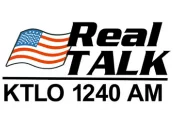
Photos: Rep. Michelle Gray (left) and Sen. Missy Irvin
The newest version of Medicaid expansion has been under construction for the past year by Arkansas lawmakers and Gov. Asa Hutchinson’s administration and is set to be unveiled Monday. Two of the bill’s lead sponsors are from North Central Arkansas.
ARHOME (pronounced “Are-Home”) stands for Arkansas Health & Opportunity for Me. Sen. Missy Irvin, R-Mountain View, and Rep. Michelle Gray, R-Bethesda, will be two of the lead sponsors of the proposal.
Sen. Irvin’s District 18 includes a portion of Baxter County, as well as part of Faulkner, Fulton, Marion, Van Buren and White counties, along with Cleburne, Searcy and Stone counties.
Rep. Gray’s District 62 covers portions of Izard, Sharp, Stone and Independence counties.
In a Talk Business & Politics interview, Irvin, Gray and Arkansas Secretary of Human Services Cindy Gillespie discussed ARHOME’s details and political obstacles for the healthcare program expected to cover more than 300,000 low-income residents who make below 138% of the federal poverty level.
Irvin, Gray and Gillespie say the primary goals of ARHOME are to slow the growth in state spending, move people out of poverty and into work and education, and to produce better health outcomes.
“We’re aiming to achieve a comprehensive program that really targets on health outcomes,” Sen. Irvin says. “We’ve worked on it for over a year. Lots of legislative input went into this program and this new approach. I honestly believe it’s exactly the policy that we need for our state.”
Arkansas’ current waiver for Arkansas Works expires at the end of this year, although two pending U.S. Supreme Court cases could complicate the whole debate.
HOW IT WORKS
ARHOME retains the private insurance model for purchasing health plans for participants like the private option and Arkansas Works did. The federal government will cover about 90% of the funding, while the state pays for the remaining 10%. Under current scenarios, on average, the state is responsible for about $200 million per year — $1.032 billion over five-years — for Arkansas Works premium supplements.
Unlike Arkansas Works, there is no work requirement, but there are incentives to work. Arkansas’ work requirement was struck down by a federal lawsuit and is pending review at the U.S. Supreme Court. Gillespie said a decision on that case or the broader Affordable Care Act — also pending a Supreme Court ruling — could shake up the entire healthcare system, but probably not immediately. The architects of ARHOME say its program work requirements align with SNAP. Also, enrollees will be given a readiness for work assessment upon enrollment. Cost sharing and co-pays are involved for those earning over 100% of poverty who qualify for the program.
Beyond regular insurance, ARHOME creates three silos for handling healthcare scenarios. They are
• RuralLife360 – To help those in rural Arkansas, especially citizens with fewer access points;
• MaternalLife360 – For pregnant women and families; and
• SuccessLife360 – To help veterans, those who were incarcerated, and those once in foster care or the Division of Youth Services (DYS).
“In the past, we treated everyone in a cookie-cutter model. We treated them all the same. ‘Here’s an insurance plan. Do what you want with it.’ Now, we’re saying that doesn’t work,” Rep. Gray says. “So here’s a piece for veterans, here’s a piece for pregnant women, here’s a piece for DYS and foster kids. We’re tailoring it so much that I actually expect to see some true outcomes in helping people”
Telemedicine is another platform for providing better healthcare across Arkansas’ rural landscape. Gillespie said the use of telehealth throughout the pandemic has accelerated options in remote areas for access and convenience.
THE POLITICAL BATTLE
To pass the budget measure needed to fund ARHOME, a 75% threshold of votes in the House and the Senate will be required. For the last four regular sessions, lawmakers have barely cleared the hurdle for either the private option or Arkansas Works.
With the work requirement stricken, there is fear there won’t be enough political cover to support the program in some circles. A few conservative lawmakers have expressed an acceptance that helping 300,000 people with health insurance is going to be a function of state government and are unwilling to kill the program. They are advocating a less expensive approach to funding Medicaid expansion: the fee-for-service model that was spiked in 2013 in favor of using private insurance plans to cover the Medicaid expanded population.
WebReadyTM Powered by WireReady® NSI










